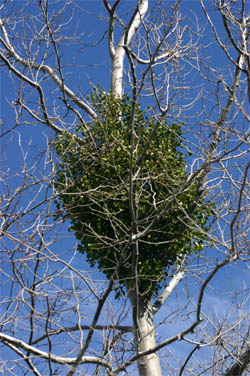
Mistletoes are a large group of plants that are parasitic on aboveground parts of woody trees and shrubs. These perennial flowering plants have specialized roots that are able to penetrate the host plant from which it derives water and nutrients. There are both full parasites like dwarf mistletoes (Arceuthobium spp.) and hemiparasites, or partial parasites, like the mistletoes used for holiday decoration. These hemiparasites contain chlorophyll, so they only derive part of their nourishment from their host. Even though they are obligatory parasites (they can remain alive and reproduce only on a living host), individual plants do not seem to be much of a nutritional drain on their host. One or a few infections on a vigorous tree will cause no harm, although the portion of a branch beyond infections may be stunted or die. Numerous infections, however, may cause significant stress, leading to premature death either directly or indirectly through secondary disease or insect infestations.
Mistletoe’s common name is derived from the Anglo-Saxon words for ‘dung’ (mistel) and ‘twig’ (tan) because of the ancient belief that mistletoe was propagated from bird droppings because plants would often appear on a branch or twig where birds had left droppings. It wasn’t until the sixteenth century that botanists discovered that mistletoe was actually spread by seeds which had passed through the digestive tract of birds after they ate the berries. Although most dispersal occurs this way, some Arceuthobium species have explosive fruits that can propel their sticky seeds outward for some distance.
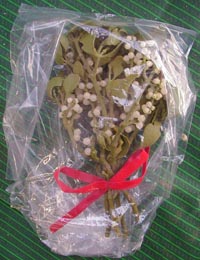
Mistletoe has a rich history of myth and tradition dating back to ancient times, probably due to their parasitic nature, elusive method of dispersal, and strange growth habit, attributing mystical powers to this parasitic plant. Mistletoe cut from oak trees was very symbolic to the Celtic Druids who ceremoniously cut it with a golden sickle on the 6th night of the moon. Later it was gathered at both mid-summer and winter solstices. In the Middle Ages it was thought that mistletoe – mistakenly thought to have sprouted from bird droppings – had life-giving powers and bestowed fertility, could protect against poisons, was an aphrodisiac, and could ward off evil spirits. In Europe it was commonly hung in doorways throughout the house and stable to prevent the entrance of witches. The origins of today’s traditions involving mistletoe may date back to the Greek festival of Saturnalia where it was believed to confer fertility and later with primitive marriage rites, or alternatively, to Scandinavia. In Norse mythology, the god of peace, Balder, was killed by an arrow made of mistletoe but his parents Odin and Frigga restored his life and gave mistletoe to the goddess of love. It was decreed that anyone who passed under mistletoe should receive a kiss. The traditions related to European mistletoe were transferred to the similar American plant with immigration and settlement. And for those who wish to observe the correct etiquette: a berry should be plucked after each kiss and when the last berry is gone, there should be no more kissing!
Mistletoes used to be grouped into one plant family but now are distributed in four plant families in the order Santalales. Only two of these, the Viscaceae and Loranthaceae, are of widespread importance. There are 8 genera and approximately 450 species worldwide in the family Viscaceae, mostly in the tropics and subtropics. The brittle stems of these herbaceous or shrubby aerial parasites are evergreen, and usually with swollen and articulated nodes. Most species have simple, opposite, evergreen leaves but a few have leaves reduced to scales. All have small, inconspicuous flowers. There are 60-70 species of Viscum, mainly in the warm regions of the Old World. The oak mistletoe that was venerated by the Celts and Germans is European mistletoe (Viscum album) which produces yellow flowers and white sticky berries. It is rare on oak, common on apple, and has been recorded from over 200 species of plants. It was introduced into California in the early 1900’s and has spread into the countryside, attacking over two dozen species of deciduous trees there.
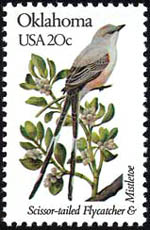
In the Americas, the most important species are in the genus Phoradendron, derived from Greek words meaning ‘thief’ and ‘tree,’ referring to its parasitic habit. There are about 190 species in this genus (10-12 found in the US), each with its own range of preferred hosts. As they are susceptible to very cold temperatures, they only occur in the southern half of the continent, below a line from approximately Oregon to New Jersey. The type that is commonly used as a Christmas decoration (P. serotinum, formerly called P. flavescens and P. leucarpum) is native to much of the eastern third of the US, from New Jersey to Florida. Interestingly, it is the State Flower of Oklahoma. This mistletoe infests a variety of deciduous tree hosts (more than 100 species), particularly American elm (Ulmus americana) in urban areas. It is often locally restricted to particular host species rather than indiscriminately infecting all types of trees. Small whitish flowers appear in May-July followed by white berries. All parts of this plant, but especially the berries, are toxic if ingested in large quantities.
In the west, there are several other species that occur primarily on hardwood trees but some also occur on juniper, cypress, and incense cedar. Big leaf mistletoe (P. tomentosum ssp. macrophyllum), which is parasitic on over 60 species of hardwood trees except oak, occurs from California to west Texas and is often used for Christmas decorations in this part of the country.

Desert mistletoe (P. californicum) infects leguminous trees. It produces tiny yellowish-green flowers; the leaves are scalelike. When the trees are leafless, the dense reddish clumps of mistletoe stems and white, pink or red fleshy fruits are extremely conspicuous.

The dwarf mistletoes (Arceuthobium spp., in the family Viscaceae) are restricted to conifers, with most species infecting only a single plant species rather than a wide range of conifer species. They reduce a tree’s growth rate and several species regularly cause the formation of witches’ brooms on their hosts. The dwarf mistletoes are considered the most important pathogen of conifers in many parts of western North America, causing significant economic losses in forestry operations. These leafless plants slowly kill the host tree, with diseased trees dying from the top down. In addition, trees stressed from mistletoe infection often are attacked by bark beetles that hasten the tree’s decline.
The family Loranthaceae is large and contains at least nine genera and over 900 species, most of which are abundant in the tropics. Most species have large, showy flowers and attack a variety of tree hosts. The noticeable buds and flowers in the pictures below are of red mistletoe or pikirangi, Peraxilla tetrapetala, on a mountain beech (Nothofagus solandri var. cliffortioides) near the Whakapapa Visitor Center on Mt. Ruepehu in Tongariro National Park on the North Island of New Zealand. This plant forms a bush up to 6 feet wide, usually close to the trunk of its host, and has characteristic small raised blisters on the small, oval or diamond-shaped leaves.
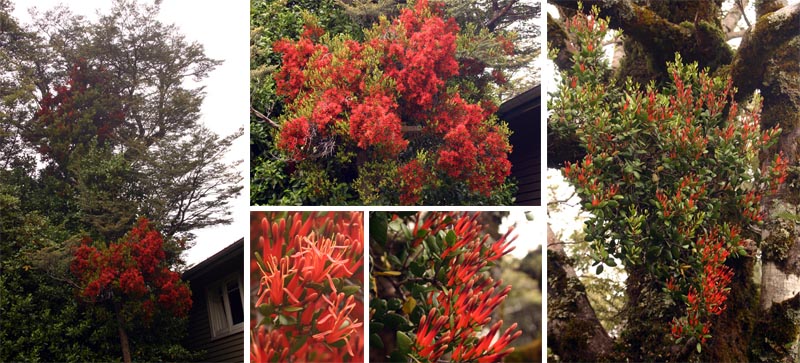
One of the most unusual mistletoes in this family is quintral (Tristerix aphylla), a leafless Chilean species that lives in the phloem of two species of columnar cactus Echinopsis (=Trichocereus) chiloensis and Eulychnia acida). In the winter the red, tubular flowers erupt through the skin of the cactus stem. The fleshy fruits are eaten by Chilean mockingbirds that disperse the seeds.


– Susan Mahr, University of Wisconsin – Madison
Latest from Wisconsin Yard & Garden
Ask Your Gardening Question
If you’re unable to find the information you need, please submit your gardening question here:





 Silver Leaf
Silver Leaf Red Star Rust
Red Star Rust Tree Species Recommended for Fall Planting
Tree Species Recommended for Fall Planting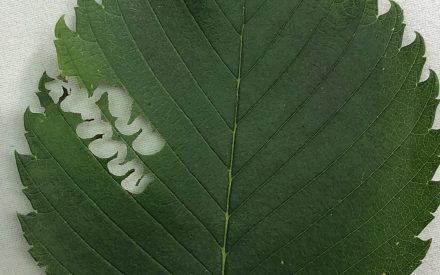 Elm Zigzag Sawfly
Elm Zigzag Sawfly


